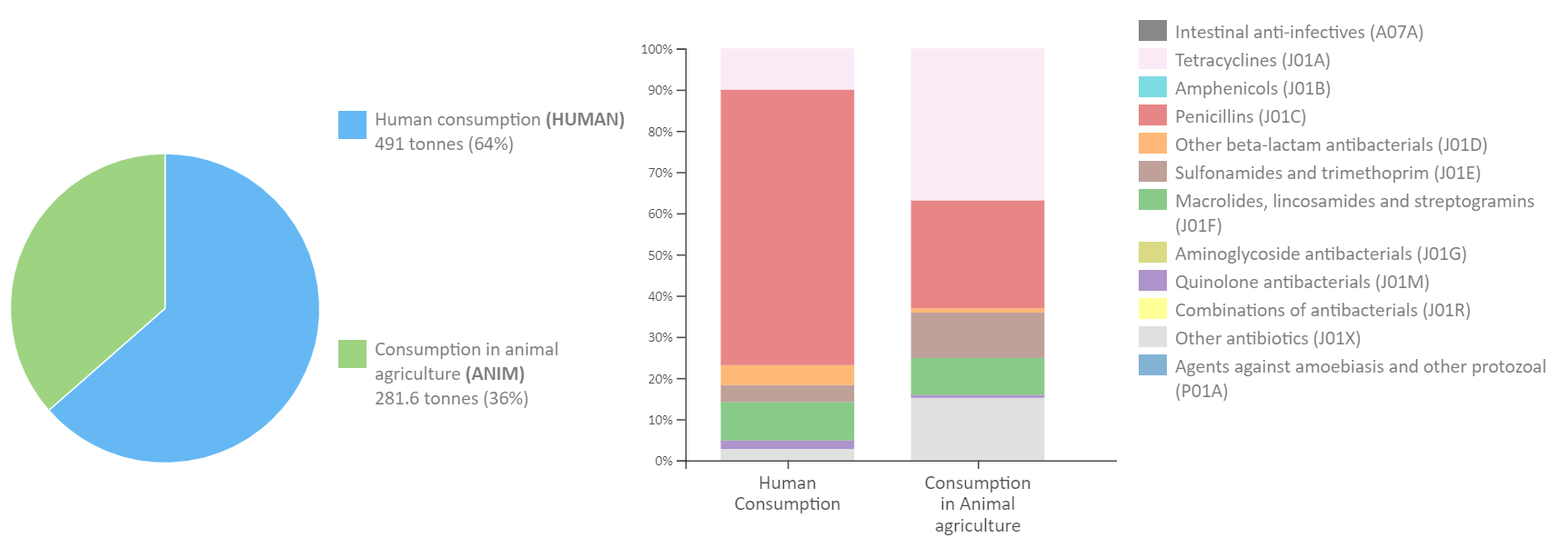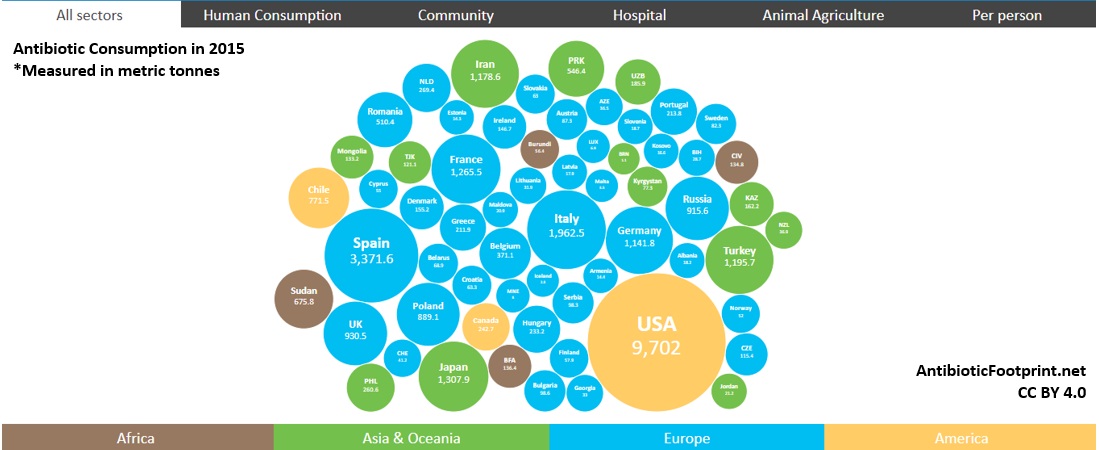The antibiotic footprint has been proposed as a global tool to communicate the total magnitude of antibiotic use by humans and livestock and its effects on the ecology.[[1],2] There is considerable similarity between the carbon footprint and antibiotic footprint (Figure 1). People need to use energy to live, but using too much energy has been driving climate change globally. Likewise, people and animals need antibiotics if they are infected with bacteria. However, overuse and misuse of antibiotics in humans and animals are fostering antibiotic-resistant bacteria and will increase the global number of human and animal deaths they cause over time.[1]
The antibiotic footprint could be estimated by combining the total amount of antibiotics consumed by humans and animals in a given country (Figure 2). Agricultural use of antibiotics is an important part of our antibiotic footprint because most of the antibiotics fed to animals are excreted un-metabolized into sewage systems and water sources, thereby fostering antibiotic-resistant bacteria in the local environment.
Similar to the carbon footprint, each country’s antibiotic footprint with official data could be presented and compared (Figure 3). This information would inform both policymakers and the community. For example, people might ask, “How much antibiotic is being used in countries without official data?” or “‘I didn’t know that so much antibiotic was used in humans and food production in my country—is this being reduced?’
Figure 1: The carbon footprint (left) and antibiotic footprint (Right).

Figure 2: An example of the antibiotic footprint of a country based on antibiotic consumption in the UK in 2017.[2]

Figure 3: Global antibiotic footprints by Country in 2015
Find out more about the ‘antibiotic footprint’ at www.antibioticfootprint.net
References
1 Limmathurotsakul, D., Sandoe, J. A., Barrett, D. C., Corley, M., Hsu, L. Y., Mendelson, M., . . . Howard, P. (2019). ‘Antibiotic footprint’ as a communication tool to aid reduction of antibiotic consumption. Journal of Antimicrobial Chemotherapy. doi:10.1093/jac/dkz185
2 AntibioticFootprint. (n.d.). Retrieved from http://www.antibioticfootprint.net/